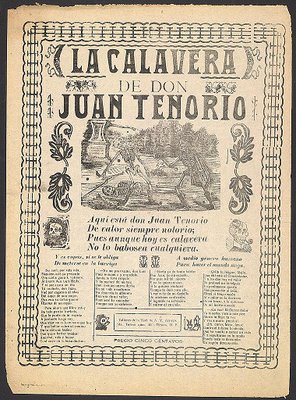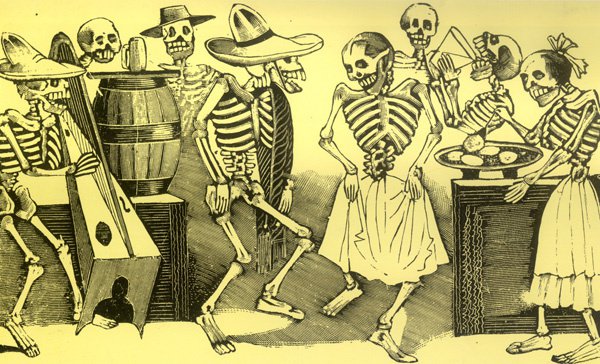
Reading & Libraries
We're always looking to improve your experience. Please Email us your feedback.
Ever visited Mexico during Autumn? There’s a golden tint to the sunsets and the air is filled with the sweet scent of marigolds and warm bread made ahead of Día de Muertos.

First things first though. Although the sugar skulls and dancing skeletons are very eye-catching and popular for merchandising - take a stroll down your nearest high street and see for yourself - Day of the Dead ought not to be confused with Halloween.
Arguably one of the most important celebrations in the calendar (and this writer’s favourite for sure), Day of the Dead is the perfect snapshot of Mexican identity, traditions and the merging of cultures and religions. Far from being morbid or spooky; families gather to spruce up the tombs in the cemetery. They bring food and drinks, candles, flowers, toys, music and prayers to remember and celebrate our departed -just as if they were visiting us on earth for a couple of days (much like in the film Coco). The festivity can last several days depending on the different regional traditions, but the official calendar celebrates it on the 1st and 2nd of November.
Such a curious celebration would have permeated to other artforms such as literature, right? Well, death is indeed prominent in our storytelling... But having indigenous roots in a country at times too obsessed with preserving its colonial history, Day of the Dead was mostly left to the popular enjoyment and religious observance. It became a natural part of how we access the world as we grow older. It's just part of who we are.
Salvador Dalí once visited Mexico and said: “I can’t stand to be in a country that is more surrealist than my paintings”. That's Latin America’s literary view on life and death. Chaotic stories, full of contradictions and a tendency to exaggerate details beyond the ordinary. Not just surreal, but not entirely real, it’s Magical Realism at its best.
An excellent example of this fusion presented by Magical Realism can be read in Juan Rulfo's 1955 novel Pedro Páramo (Borrow the book). In this story, a man promises to his dying mother to go find the father he never met. When he arrives in their hometown, he finds a ghost town that reveals to be populated only by memory, hallucinations and ghosts whispering secrets from their past.
Think of a hot Sunday afternoon with nowhere to go and nothing to do. Sun-washed streets under a heavy yellow light. A muffled soundscape of dogs barking and the indistinct chatter of people at a distance, the church bells shily counting the hours... A typical Mexican town in the middle of the day. Now, in Pedro Paramo’s town, the chatter is that of dead people talking in their sleep, evoking their past. There is no fear, suspense or romantic element to it. Weird things are half-heartedly expected to happen, you wouldn’t be surprised if they did but are a tad disappointed when they don’t.

Day of the Dead has also inspired endless poetry in the shape of calaveras literarias o calaveritas (literary skulls).
These are short poems composed as mocking epitaphs and are irreverent by nature. The exact origins of Calaveritas are unclear, but most agree they were born as a form of political and social criticism of oppressing government and society of the 18th century. Nowadays, writing these Day of the Dead poems is hugely popular among children and adults alike. They embody the wit and sense of humour so characteristic of Mexicans; and symbolically, they remind us all that life is finite, and not to take death too grimly.
“The Mexican (people)… is familiar with death, jokes about it, caresses it, sleeps with it, celebrates with it. They think of it as a favourite toy and their most lasting love.”
The (literary) skull of Don Juan Tenorio
by José Guadalupe Posada
| “Here is Don Juan Tenorio | Aquí está don Juan Tenorio |
| who is always notorious; | De valor siempre notorio; |
| and even though today he’s a skull | Pues aunque hoy es calavera |
| no one is slobbering over him.” | No lo babosea cualquiera. |

If you want to learn more about this famous illustrations, please visit José Guadalupe Posada's Foundation website.
Juan Rulfo's 1955 novel Pedro Páramo (in English) will soon available at our libraries to arrive in stock – Look out for it here.